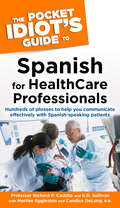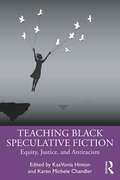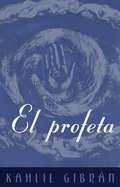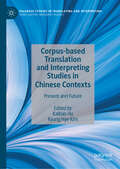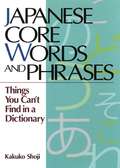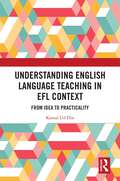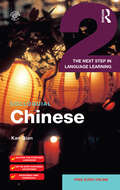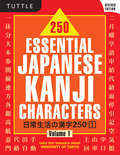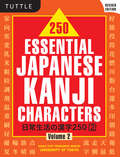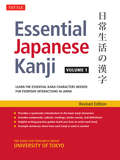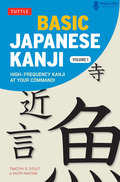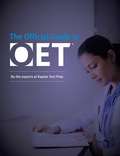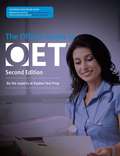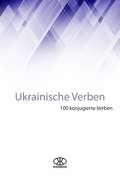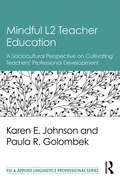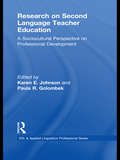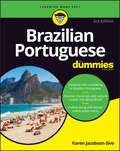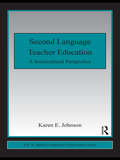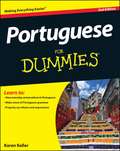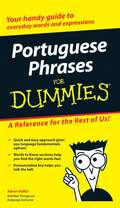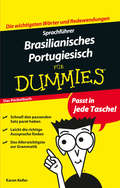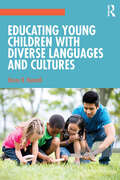- Table View
- List View
The Pocket Idiot's Guide to Spanish For Health Care Professionals
by K.D. Sullivan Prof. Richard P. CastilloFor health workers serving a growing community. Today, when one in four babies born in the US is Hispanic, it is essential that every hospital administrator, nurse, EMT, and doctor have a working knowledge of Spanish. Chapters include vocabulary, phrases, and pronunciation for everything from insurance forms to mental health to prenatal care, with additional sections on dentistry and optometry. • Essential reference for doctors, nurses, EMTs, nursing home staff, home caregivers, volunteers, hospice nurses, and administrators. • Perfect size for a lab coat pocket. • Author is an experienced linguist with experience in teaching health care–related Spanish courses.
Teaching Black Speculative Fiction: Equity, Justice, and Antiracism
by KaaVonia Hinton Karen Michele ChandlerTeaching Black Speculative Fiction: Equity, Justice, and Antiracism edited by KaaVonia Hinton and Karen Michele Chandler offers innovative approaches to teaching Black speculative fiction (e.g., science fiction, fantasy, horror) in ways that will inspire middle and high school students to think, talk, and write about issues of equity, justice, and antiracism. The book highlights texts by seminal authors such as Octavia E. Butler and influential and emerging authors, including Nnedi Okorafor, Kacen Callender, B. B. Alston, Tomi Adeyemi, and Bethany C. Morrow.Each chapter in Teaching Black Speculative Fiction: introduces a Black speculative text and its author, describes how the text engages with issues of equity, justice, and/or antiracism, explains and describes how one theory or approach helps elucidate the key text’s concern with equity, justice, and/or antiracism, and offers engaging teaching activities that encourage students to read the focal text; that facilitate exploration of the text and a theoretical lens or critical approach; and that guide students to consider ways to extend the focus on equity, justice, and/or antiracism to action in their own lives and communities.
El Profeta
by Kahlil GibranLa obra maestra de Kahlil Gibrán es uno de los más queridos clásicos de nuestra época, un repositorio rico en sabiduría y alegría que ha inspirado a generaciones de lectores. Con poesía frugal y bellamente resonante, El profeta ofrece inolvidables palabras de esperanza y consolación sobre los temas del nacimiento, del amor, del matrimonio, de la muerte y de los otros hitos de la vida.Desde su publicación hace más de setenta años, El profeta ha sido traducido a más de veinte idiomas y ha dado inspiración a millones de lectores, quienes encuentran en sus palabras la expresión de los más profundos impulsos, la más profunda poesía, del corazón humano. Ilustrados con los dibujos místicos de Gibrán--comparados por Auguste Rodin a los de William Blake--El profeta es un volumen para disfrutar y al cual volver a lo largo de la vida.From the Trade Paperback edition.
El Profeta
by Kahlil GibranLa obra maestra de Kahlil Gibrán es uno de los más queridos clásicos de nuestra época, un repositorio rico en sabiduría y alegría que ha inspirado a generaciones de lectores. Con poesía frugal y bellamente resonante, El profeta ofrece inolvidables palabras de esperanza y consolación sobre los temas del nacimiento, del amor, del matrimonio, de la muerte y de los otros hitos de la vida. Desde su publicación hace más de setenta años, El profeta ha sido traducido a más de veinte idiomas y ha dado inspiración a millones de lectores, quienes encuentran en sus palabras la expresión de los más profundos impulsos, la más profunda poesía, del corazón humano. Ilustrados con los dibujos místicos de Gibrán--comparados por Auguste Rodin a los de William Blake--El profeta es un volumen para disfrutar y al cual volver a lo largo de la vida.
Corpus-based Translation and Interpreting Studies in Chinese Contexts: Present and Future (Palgrave Studies in Translating and Interpreting)
by Kaibao Hu Kyung Hye KimThis edited collection reflects on the development of Chinese corpus-based translation and interpreting studies while emphasising perspectives emerging from a region that has traditionally been given scant consideration in English-language dominated literature. Striking the balance between methodological and theoretical discussion on corpus-based empirical research into Chinese translation and interpreting studies, the chapters additionally introduce and examine a wide variety of case studies. The authors include up-to-date corpus-based research, and place emphasis on new perspectives such as sociology-informed approaches and cognitive translation studies. The book will be of interest to researchers and advanced students of translation/interpreting and contrastive linguistics studies, corpus linguistics, and Chinese linguistics.
Japanese Core Words and Phrases: Things You Can't Find in a Dictionary
by Kakuko ShojiSome Japanese words and phrases, even though they lie at the core of the language, forever elude the student's grasp. They are not explained satisfactorily in dictionaries or textbooks for the simple reason that they cannot be conveniently defined. Japanese Core Words and Phrases brings these recalcitrants to bay.The book is divided into two parts, each of which is arranged in alphabetical order. The first part is devoted to words indicating physical as well as psychological distance—roughly equivalent to "this," "that," "that over there," and "where," but quite different in usage. Physical distance is covered in most textbooks, but psychological distance—every student's nemesis—is not.The second part of the book covers a variety of idiomatic expressions, many of which appear in Japanese proficiency tests. Each entry word or phrase is not simply explained but exemplified in sentence form, clarifying its meaning (in the case of many students) for the very first time.Japanese Core Words and Phrases has a great deal to offer the beginning student and much to offer the intermediate student. Little more can be asked of a book on the Japanese language.Previously published in the Power Japanese series as Core Words and Phrases: Things You Can't Find in a Dictionary.
Understanding English Language Teaching in EFL Context: From Idea to Practicality
by Kamal Ud DinThis volume is comprehensively designed to help prospective English Language Teaching (EFL) teachers specializing in EFL mainly in South Asian countries. It analyses the application of ELT theories, concepts, and methods to sharpen their understanding of the various techniques used for teaching English effectively in the EFL context. The book discusses the basic concepts of language aimed to develop a sense of the language phenomenon as a unique human attribute. It covers the theories of language from various disciplines such as biology, sociology, psychology, and linguistics. The book explains the underlying structures or components that shape the edifice of languages such as phonology, morphology, syntax, grammar, phonetics, semantics, and pragmatics. While taking the reader through language learning theories with a focus on English as the second language, it discusses the different teaching methods that can be adopted by teachers in classroom settings. The book will be of interest to teachers, students and researchers of education, teacher education, and English Language Teaching. It will also be useful for educators, English language teachers, language learners, professionals working in the field of education and language, and those who aspire to teach and learn English in Foreign context.
Colloquial Chinese 2: The Next Step in Language Learning (Colloquial Series)
by Kan QianColloquial Chinese 2 is designed for those who already have some knowledge of Chinese. It is ideal for refreshing and extending your grasp of Chinese grammar and vocabulary, either in preparation for travel or work. Key features include revision material to help the consolidation of basics a range of Chinese reading texts presented in simplified characters and pinyin romanization lessons based on practical everyday topics and supplemented by useful cultural notes lots of spoken and written exercises in each lesson for practice and consolidation a grammar summary detailed answer key Chinese-English glossary Audio material to accompany the course is available to download free in MP3 format from www.routledge.com/cw/colloquials. Recorded by native speakers, the audio material features the dialogues and texts from the book and will help develop your listening and pronunciation skills.
Colloquial Chinese 2: The Next Step in Language Learning (Colloquial Series)
by Kan QianColloquial Chinese 2 is designed for those who already have some knowledge of Chinese. It is ideal for refreshing and extending your grasp of Chinese grammar and vocabulary, either in preparation for travel or work. Key features include revision material to help the consolidation of basics a range of Chinese reading texts presented in simplified characters and pinyin romanization lessons based on practical everyday topics and supplemented by useful cultural notes lots of spoken and written exercises in each lesson for practice and consolidation a grammar summary detailed answer key Chinese-English glossary Audio material to accompany the course is available to download free in MP3 format from www.routledge.com/cw/colloquials. Recorded by native speakers, the audio material features the dialogues and texts from the book and will help develop your listening and pronunciation skills.
250 Essential Japanese Kanji Characters Volume 1 Revised
by Kanji Text University of Tokyo"This is the best kanji book available today. Designed for beginners with a basic knowledge of Japanese to use in the classroom on for self-study."--Modern Language JournalEveryday tasks like finding a street address or buying a train ticket can be an ordeal in Japan if you don't read kanji-the system of Japanese writing based on Chinese characters. A group of teachers from the prestigious University of Tokyo have pooled their talents to create 250 Essential Japanese Kanji Characters in two volumes: a practical way to learn the kanji most frequently used in daily life in Japan. Each lesson helps you master a new group of kanji, using an extremely effective approach that focuses on you, the learner, taking an active part.Introductory Quizzes introduce everyday situations where you encounter kanji.Vocabulary sections help you understand the readings and meanings of the kanji.New Character Charts teach you new kanji systematically—for each character you'll learn its meanings, its basic on-kun readings, its stroke order, common compounds, and derivations.Practice sections help you improve your skills in recognizing and using the kanji.Advanced Placement Exam Practice Questions for each lesson follow the format of the College Boards Japanese Language and Culture examination.
250 Essential Japanese Kanji Characters Volume 1 Revised
by Kanji Text University of Tokyo"This is the best kanji book available today. Designed for beginners with a basic knowledge of Japanese to use in the classroom on for self-study."--Modern Language JournalEveryday tasks like finding a street address or buying a train ticket can be an ordeal in Japan if you don't read kanji-the system of Japanese writing based on Chinese characters. A group of teachers from the prestigious University of Tokyo have pooled their talents to create 250 Essential Japanese Kanji Characters in two volumes: a practical way to learn the kanji most frequently used in daily life in Japan. Each lesson helps you master a new group of kanji, using an extremely effective approach that focuses on you, the learner, taking an active part.Introductory Quizzes introduce everyday situations where you encounter kanji.Vocabulary sections help you understand the readings and meanings of the kanji.New Character Charts teach you new kanji systematically—for each character you'll learn its meanings, its basic on-kun readings, its stroke order, common compounds, and derivations.Practice sections help you improve your skills in recognizing and using the kanji.Advanced Placement Exam Practice Questions for each lesson follow the format of the College Boards Japanese Language and Culture examination.
250 Essential Japanese Kanji Characters Volume 2 Revised
by Kanji Text University of TokyoTackling kanji-the system of Japanese writing based on Chinese characters-is the most challenging aspect of learning the Japanese language. 250 Essential Japanese Kanji Characters Volume 1 and Volume 2 are time-tested books that have now been enhanced and revised using proven methods from the Kanji Text Research Group at the University of Tokyo.Together, these updated volumes incorporate all 410 kanji required for the AP exam, along with practice questions. Each lesson helps you master a new group of kanji, with either an etymology or a memory aid offered to give students a basis for understanding and memorizing the kanji systematically and correctly.
Essential Japanese Kanji Volume 1
by Kanji Text University of TokyoMemorize tricky Japanese kanji with ease!Since its publication in 1993, this beginner Japanese workbook and textbook has been a hit with teachers and students for learning basic Japanese kanji characters. Speak, read and write Japanese with this newly revised edition that has been updated and expanded by members of the Kanji Text Research Group at the prestigious Tokyo University.Essential Japanese Kanji Volume 1 presents the 250 kanji characters that are most frequently found in many places in Japan, including: Street signs Restaurant menus Subway ticket machines ATMsStroke order diagrams and writing practice squares present every kanji systematically alongside its various meanings, readings, vocabulary compounds and derivations. Extensive practice exercises and self-graded quizzes (with answer keys at the back) help you improve your skill at recognizing and using the kanji.In addition to the practical focus of learning the kanji in the context of actual situations, each chapter includes Advanced Placement (AP)-type exam questions mirroring the format of the College Board's Japanese Language and Culture examination. The captivating introduction explains the origins of the kanji and the Japanese kana phonetic alphabets. Appendices list the kanji in two ways-according to pronunciations and radicals-and a glossary of common vocabulary compounds.
Basic Japanese Kanji Vol 1
by Timothy G. Stout Kaori HakoneThis is an invaluable study guide for learning basic Japanese characters. Basic Japanese Kanji, Volume 1 is your introduction to the first 205 of the 410 core characters in Japanese (plus 18 additional kanji that serve as building blocks). These kanji are the most frequently used in newspapers, conversations and the top college-level beginning Japanese textbooks. Using a focused combination of proven traditional methods and unique new methods, this book will help independent learners and university or high school students to write, read, speak and use Japanese better. Basic Japanese Kanji makes studying easier by using a combination of proven traditional methods and unique new methods to learn kanji: Clear explanations of the kanji, example compounds, useful vocabulary, and extensive writing practice. Hundreds of readings with comprehension questions similar in format to those on many important national and international Japanese exams. Additional natural and level-appropriate exercises. Original mnemonics for every kanji. Key features of the CD-ROM: Interactive software offers exam-quality practice. Gives instant feedback/correction. Extensive kanji exercises. Reading comprehension passages and questions. A set of printable kanji flash cards, for on-the-go practice.
Official Guide to OET
by Kaplan Test PrepThe Official Guide to OET is the first and only guide book endorsed by the test maker (CBLA) and is designed to prepare students for the updated OET exam. Kaplan Test Prep, the world leader in test preparation since 1938, has authored this book incorporating key test-taking tips and strategies. The practice questions have been reviewed by CBLA to ensure they are true to the test.Get familiar with the exam to help you face the OET with confidence. Test-like Listening tracks, realistic practice questions, and additional online resources give you everything you need to succeed on the OET. This book is suitable for both self-study and classroom use.Tips and Practice1 full practice testOnline audio for Listening contentSkill-boosting activities for each of the subtests (Listening, Reading, Writing & SpeakingSelf-study tipsTest Day adviceExpert GuidanceWe know the test: The Kaplan team in conjunction with CBLA ensure our practice questions and study materials are true to the testKaplan's books and practice questions are written by experts who know students—every explanation is written to help you learnWe invented test prep—Kaplan (www.kaptestglobal.com) has been helping students for 80 years, and our proven strategies have helped legions of students achieve their dreams
Official Guide to OET (Kaplan Test Prep)
by Kaplan Test PrepThe Official Guide to OET is the first guide book endorsed by the test maker (CBLA) and is designed to prepare students for the updated OET exam. Kaplan Test Prep, the world leader in test preparation since 1938, has authored this book incorporating key test-taking tips and strategies. The practice questions have been reviewed by CBLA to ensure they are true to the test.Get familiar with the exam to help you face the OET with confidence. Test-like Listening tracks, realistic practice questions, and additional online resources give you everything you need to succeed on the OET. This book is suitable for both self-study and classroom use.To access your audio and online resources, first register online at kaptest.com/booksonline. Once you&’ve registered, access your audio and resources at kaptest.com/login or download the Kaplan Mobile Prep app on Google Play or the App Store for your Android or iOS deviceTips and Practice1 full practice testOnline audio for Listening contentSkill-boosting activities for each of the subtests (Listening, Reading, Writing & SpeakingSelf-study tipsTest Day adviceExpert GuidanceWe know the test: The Kaplan team in conjunction with CBLA ensure our practice questions and study materials are true to the testKaplan's books and practice questions are written by experts who know students—every explanation is written to help you learnWe invented test prep—Kaplan (www.kaptestglobal.com) has been helping students for 80 years, and our proven strategies have helped legions of students achieve their dreams
Ukrainische Verben (100 Veben Serie #15)
by KarbidsSpeziell für elektronische Geräte geschrieben, hat ,Ukrainische Verben' eine Einführung in die Bildung aller Verbalzeiten im Ukrainischen, sowie 100 wesentliche Verben vollständig konjugiert mit ihrer Bedeutung. Dieses Buch ermöglicht es dem Benutzer, im gesamten Text zu suchen, da es keine Bilder oder verschwindenden oder unleserlichen Text hat.
Mindful L2 Teacher Education: A Sociocultural Perspective on Cultivating Teachers' Professional Development (ESL & Applied Linguistics Professional Series)
by Karen E. Johnson Paula R. GolombekTaking a Vygotskian sociocultural stance, this book demonstrates the meaningful role that L2 teacher educators and L2 teacher education play in the professional development of L2 teachers through systematic, intentional, goal-directed, theorized L2 teacher education pedagogy. The message is resoundingly clear: Teacher education matters! It empirically documents the ways in which engagement in the practices of L2 teacher education shape how teachers come to think about and enact their teaching within the sociocultural contexts of their learning-to-teach experiences. Providing an insider’s look at L2 teacher education pedagogy, it offers a close up look at teacher educators who are skilled at moving L2 teachers toward more theoretically and pedagogically sound instructional practices and greater levels of professional expertise. First, the theoretical foundation and educational rationale for exploring what happens inside the practices of L2 teacher education are established. These theoretical concepts are then used to conduct microgenetic analyses of the moment-to-moment, asynchronous, and at-a-distance dialogic interactions that take place in five distinct but sometimes overlapping practices that the authors have designed, repeatedly implemented, and subsequently collected data on in their own L2 teacher education programs. Responsive mediation is positioned as the nexus of mindful L2 teacher education and proposed as a psychological tool for teacher educators to both examine and inform the ways in which they design, enact, and assess the consequences of their own L2 teacher education pedagogy.
Research on Second Language Teacher Education: A Sociocultural Perspective on Professional Development (ESL & Applied Linguistics Professional Series)
by Karen E. JohnsonEmbracing a sociocultural perspective on human cognition and employing an array of methodological tools for data collection and analysis, this volume documents the complexities of second language teachers’ professional development in diverse L2 teacher education programs around the world, including Asia, South America, Europe, and North America, and traces that development both over time and within the broader cultural, historical and institutional settings and circumstances of teachers’ work. This systematic examination of teacher professional development illuminates in multiple ways the discursive practices that shape teachers’ knowing, thinking, and doing and provides a window into how alternative mediational means can create opportunities for teachers to move toward more theoretically and pedagogically sound instructional practices within the settings and circumstances of their work. The chapters represent both native and nonnative English speaking pre-service and in-service L2 teachers at all levels from K-12 through higher education, and examine significant challenges that are present in L2 teacher education programs.
Brazilian Portuguese For Dummies
by Karen Jacobson-SiveLanguage learning is easy with Dummies Brazilian Portuguese For Dummies can help you achieve your goals of learning another language. Traveling to Brazil? Taking a class in school? Want to meet people and pick up a new hobby? Just curious about the sixth most spoken language in the world? We&’ve got you covered, with easy-to-follow lessons on the basics, plus phrases and topics you need to know, like greetings, travel phrases, business phrases, numbers and measurements, and social media. Add speaking Portuguese to the long list of cool things you can do—with the help of Brazilian Portuguese For Dummies. Start from the beginning and learn the very basics of Brazilian Portuguese Practice authentic phrases for travel, business, and communicating online Perfect your pronunciation with bonus audio tracks, and discover fun facts about Brazilian culture Get recommendations for movies, travel tips, and moreWhether you&’re studying Portuguese for business, school, or pleasure, Dummies is the best guide for getting started with this beautiful language.
Second Language Teacher Education: A Sociocultural Perspective (ESL & Applied Linguistics Professional Series)
by Karen JohnsonThis book presents a comprehensive overview of the epistemological underpinnings of a sociocultural perspective on human learning and addresses in detail what this perspective has to offer the field of second language teacher education. Captured through five changing points of view, it argues that a sociocultural perspective on human learning changes the way we think about how teachers learn to teach, how teachers think about language, how teachers teach second languages, the broader social, cultural, and historical macro-structures that are ever present and ever changing in the second language teaching profession, and what constitutes second language teacher professional development. Overall, it clearly and accessibly makes the case that a sociocultural perspective on human learning reorients how the field understands and supports the professional development of second language teachers.
Portuguese For Dummies
by Karen KellerThe fast and easy way to learn to speak Brazilian PortugueseQuick! What's the most widely spoken language in South America? That's right, Portuguese! And what's the fastest, easiest, most enjoyable way to learn Portuguese? Portuguese for Dummies, of course! This fun, friendly guide helps you start speaking Brazilian Portuguese immediately!Whether you're a student, a traveler, or you work in business or government, you'll love its practical lessons, cultural facts, and handy references--including a Portuguese-English mini-dictionary, lists of vital verbs, and more!Have everyday conversations in PortugueseMake sense of Portuguese grammarUse idioms and popular expressionsImprove your pronunciationGrasp verb conjugationsGet around in Portuguese-speaking countriesPortuguese For Dummies comes complete with a CD loaded with real-life dialogues that help you understand and pronounce this lovely, lyrical language with ease.CD-ROM/DVD and other supplementary materials are not included as part of the e-book file, but are available for download after purchase.
Portuguese Phrases For Dummies
by Karen KellerAre you thinking about traveling, studying, or working in Portugal or Brazil, but you don't know any Portuguese? Want to improve your conversation skills with the Portuguese-speaking people in your life? Portuguese Phrases for Dummies is the perfect diving board for anyone looking to communicate and even become fluent in the language. As the fifth-most widely spoken language in the world, Portuguese can be heard in South America, Africa, Asia, and of course, Portugal. If you want to know basic Portuguese but don't want a boring textbook that unloads tons of conjugation rules or long lists of words to memorize, then this quick-and-easy phrasebook will get your feet wet without overwhelming you. This friendly book covers a wide array of subjects both helpful and interesting, including: Numbers, days of the week, measurements, and time Making friends and small talk Enjoying every type of meal Shopping in markets and at stores Culture, leisure, and activities Work and transportation Finding a place to live Dealing with emergencies Slang and colloquial terms Phrases and particles to make you sound like a local! Knowing these fundamentals, you'll be able to communicate with Portuguese-speaking people and continue learning about the language and culture. With hundred of useful phrases at your fingertips, Portuguese Phrases for Dummies will give you a basic comprehension of this beautiful language and have you speaking instantly!
Sprachführer Brasilianisches Portugiesisch für Dummies (Für Dummies)
by Karen KellerMit diesem Büchlein sind Sie für kurze Gespräche in Brasilien auf Portugiesisch gerüstet: Ob Sie in Rio in einer Churrascaria bestellen, in Fortaleza eine Karnevalsparty besuchen, sich Ihren Geschäftspartnern vorstellen, über Ihre Familie sprechen wollen oder Ihren Urlaub in Brasilien verbringen, hier finden Sie die passenden Sätze für die jeweilige Situation. Ganz nebenbei erfahren Sie das Wichtigste über die portugiesische Grammatik und bekommen viele Tipps für die richtige Aussprache. Außerdem können Sie mit den beliebtesten brasilianischen Redewendungen einen guten Eindruck machen.
Educating Young Children with Diverse Languages and Cultures
by Karen N. NemethThis comprehensive textbook prepares early childhood educators to effectively work with and support young children (ages 0-8) with diverse languages, cultures, and learning needs. With a multipurpose, multilevel format, this dynamic resource focuses on the central role of language development and culture in all aspects of learning. Adaptable chapters cover curriculum, family involvement, co-teaching, classroom environment and more, and feature both brief and deeper study versions of the material, alongside a wealth of case examples and implementation strategies. Accompanied by an online instructor’s manual, this ground-breaking text is an ideal resource for students and educators in early childhood and second language education, and all fields that work with young children, and all fields that work with young children.
